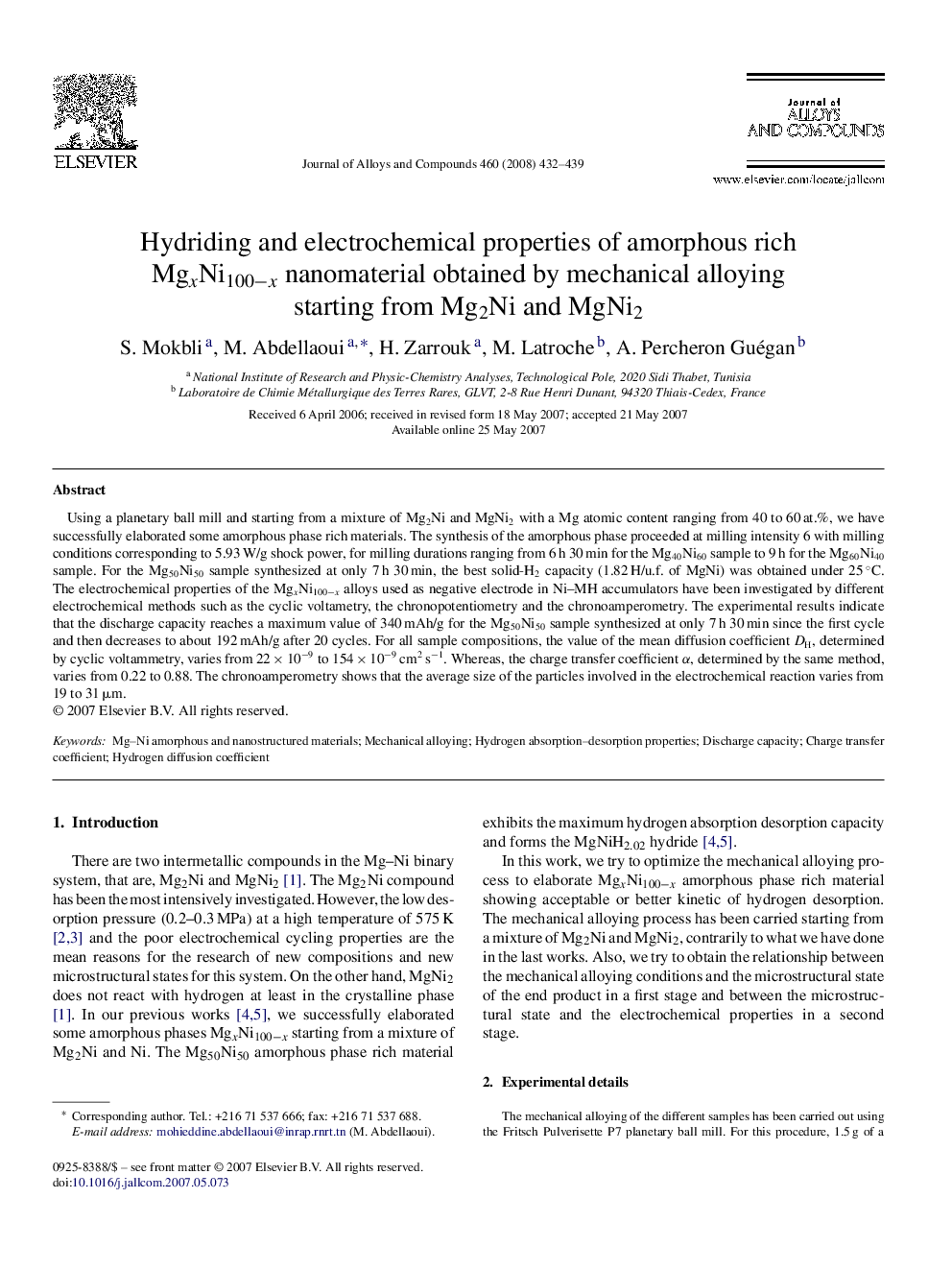| Article ID | Journal | Published Year | Pages | File Type |
|---|---|---|---|---|
| 1623919 | Journal of Alloys and Compounds | 2008 | 8 Pages |
Using a planetary ball mill and starting from a mixture of Mg2Ni and MgNi2 with a Mg atomic content ranging from 40 to 60 at.%, we have successfully elaborated some amorphous phase rich materials. The synthesis of the amorphous phase proceeded at milling intensity 6 with milling conditions corresponding to 5.93 W/g shock power, for milling durations ranging from 6 h 30 min for the Mg40Ni60 sample to 9 h for the Mg60Ni40 sample. For the Mg50Ni50 sample synthesized at only 7 h 30 min, the best solid-H2 capacity (1.82 H/u.f. of MgNi) was obtained under 25 °C. The electrochemical properties of the MgxNi100−x alloys used as negative electrode in Ni–MH accumulators have been investigated by different electrochemical methods such as the cyclic voltametry, the chronopotentiometry and the chronoamperometry. The experimental results indicate that the discharge capacity reaches a maximum value of 340 mAh/g for the Mg50Ni50 sample synthesized at only 7 h 30 min since the first cycle and then decreases to about 192 mAh/g after 20 cycles. For all sample compositions, the value of the mean diffusion coefficient DH, determined by cyclic voltammetry, varies from 22 × 10−9 to 154 × 10−9 cm2 s−1. Whereas, the charge transfer coefficient α, determined by the same method, varies from 0.22 to 0.88. The chronoamperometry shows that the average size of the particles involved in the electrochemical reaction varies from 19 to 31 μm.
